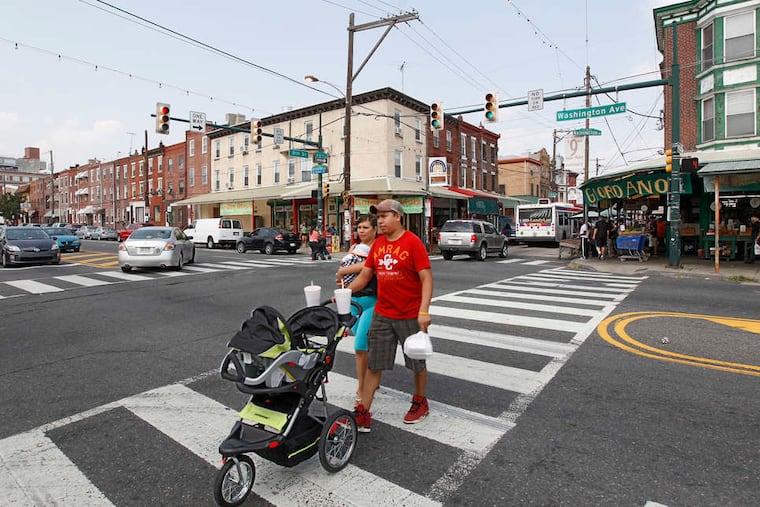Residents support reducing Washington Avenue to three driving lanes in South Philly
“I would have to say I am a little bit surprised,” Lily Reynolds said, “but I think that it does also indicate that people really want to have safe neighborhoods.”

Philadelphians in a survey favored a true transformation of Washington Avenue, the problematic and dangerous South Philadelphia street that has long prompted headaches for pedestrians, bikers, and drivers alike.
Of more than 5,600 people who gave feedback, most preferred “kind of the biggest change from what’s there today” when asked to weigh in on three redesign plans between Fourth Street and Grays Ferry Avenue, said Lily Reynolds, the city’s deputy director of Complete Streets.
Seventy-one percent of respondents preferred the three-lane layout, proposing to rework Washington’s five driving lanes, two parking lanes, and two bike lanes into three driving lanes, two parking lanes, and two parking-protected bike lanes.
Motor vehicles would travel along one lane in each direction, and there would be a center turning lane.
More space for pedestrians and “floating bus islands” for SEPTA riders are part of the plan. Increased traffic on surrounding streets and slightly longer travel times for drivers during rush hour are among the downsides.
“I would have to say I am a little bit surprised,” Reynolds said, “but I think that it does also indicate that people really want to have safe neighborhoods.”
The options — three-lane, four-lane, and mixed-lane layouts — all incorporated parking-protected bike lanes. The city’s Office of Transportation, Infrastructure and Sustainability detailed the good and the bad of each in a series of videos.
This doesn’t mean the city is moving ahead at full speed ahead with the three-lane layout. Officials need to continue conversations with City Council on parking and loading legislation, as well as with partner agencies, before creating a final engineering plan.
“This wasn’t a vote,” Reynolds said. “This was one piece of information that the city’s using to help inform our decision-making process.”
The city collected feedback through an online survey, as well as by phone and email. Officials shifted the process from public meetings in response to the coronavirus pandemic and found their efforts to be productive. The survey garnered the nearly 5,500 responses in four languages between May and July. More than half of those surveyed live within the four zip codes closest to the corridor.
“It’s exciting to see [responses from] folks who are working during the day or at night or just aren’t really comfortable coming to these types of meetings,” Reynolds said of participants. “Whatever the reason may be, we had sort of a lot more and hopefully diverse response.”
Respondents highlighted safe crossings for pedestrians and lanes for bicyclists as top priorities, and were least concerned with fast driving times and less traffic on side streets. The mixed-lane option was the second-most-preferred choice, and the four-lane layout was least popular.
There were more than 250 reportable crashes and four fatalities on Washington between 2012 and 2018, while a lack of protected bike lanes put cyclists in close proximity with drivers. Double parking plus a lack of parking regulations also cause issues.
Reynolds wasn’t able to provide a specific repaving timeline beyond 2021 but noted that paving is normally done during the summer.
The project will be made possible through a paving package budgeted at $15.8 million in federal funds. The Delaware River Waterfront Corp. is leading a project along Washington from Fourth Street to Columbus Boulevard.
Further updates regarding the improvement project can be found online.